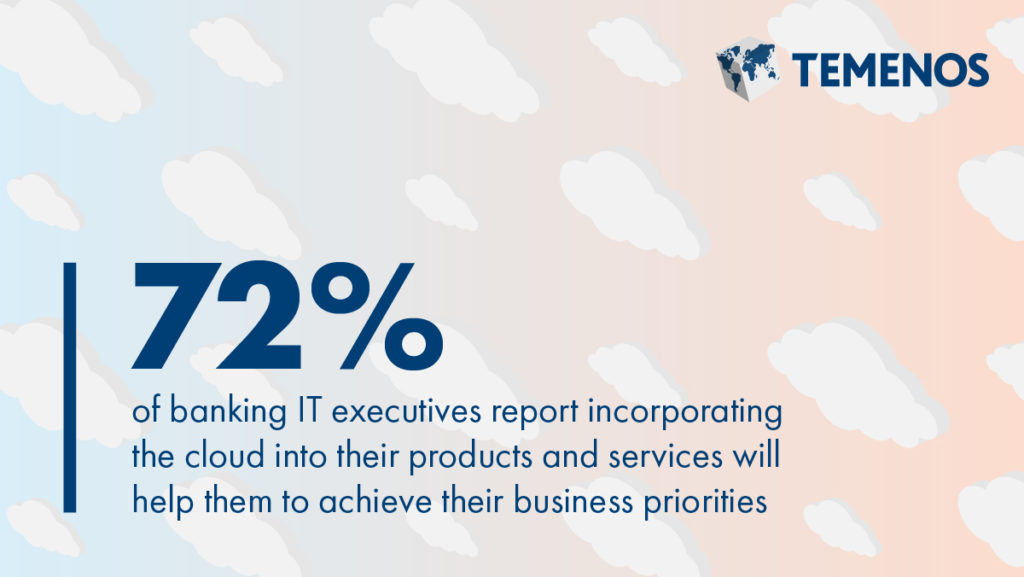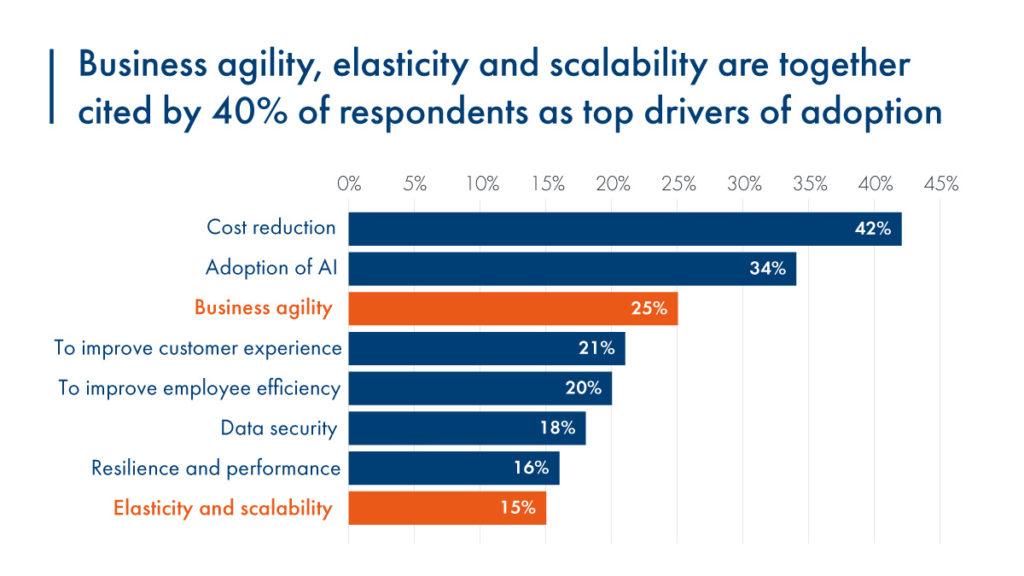Banks may not have been the earliest adopters of the cloud, but industry leaders now realize that a cloud-based digital strategy enables a range of strategic advantages—including improved sustainability.
Cloud adoption rates are accelerating as all financial institutions strive to move more deftly, launch products more quickly, and hone operational efficiency. This was confirmed in a report late last year from the Economist Intelligence Unit (EIU). For instance, U.S. fintech Varo Bank claims that with the cloud driving its digital services it can operate 75% more cheaply than a traditional bank. These benefits are then passed on to the end customer by way of lower-cost, tech-led banking services.
Crucially, the move to the cloud is now as pronounced among Tier 1 and Tier 2 banks as it is among industry disruptors. Last year saw a flurry of deals. HSBC committed to using Amazon Web Services to develop new digital products and support security and compliance standards, while Wells Fargo signed on Google and Microsoft as public cloud providers. Google has agreed similar partnerships with Deutsche Bank and Goldman Sachs. PayPal, meanwhile, used a cloud-based software-as-a-service (SaaS) deployment model with Temenos to roll out its new Buy Now, Pay Later (BNPL) proposition across four major markets, citing it as “the fastest start to any product [it has] ever launched.”
Pandemic-Inspired Response
The Covid-19 pandemic has further accelerated cloud adoption, as renewed emphasis on digital channels gave banks with cloud and SaaS-based strategies an edge. As an example, in April 2020, Atlantic Union Bank, serving small businesses in the U.S., was able to respond to the U.S. government’s Paycheck Protection Program (PPP) in just four days, bringing vital financial support to local communities with welcome immediacy via a digital loan application portal, using the Temenos Infinity SaaS solution to rapidly process loan applications from small businesses. Striving for this kind of responsiveness is now central to all banks’ survival.
The Benefit to Business Strategies
In the EIU survey, which polled more than 200 IT banking executives globally, 72% made a clear link between moving their products and services into the cloud and fulfilling their top business priorities—including reducing operational costs and improving business agility.

In geographies where ambitions to catch up or take services to the next level are most pronounced, this belief was particularly acute: 68% of Latin American financial institutions had especially strong expectations, followed by 43% in the U.S.
Continuous Innovation and Deployment
There are further benefits to be had as financial institutions move deeper into the cloud, including AI innovation. Deutsche Bank’s tie-up with Google is partly geared to “co-innovating new products and services”—including AI-based recommendations. Database virtualization is another area ripe for exploitation, offering greater elasticity of data so that banks and fintechs needn’t over-equip their own datacenters to create and deliver new customer experiences and functionality.
As the industry moves toward a continuous innovation and feature deployment model, flexible scalability will be an essential enabler. The ability to control system capacity on an as-needed basis will ensure lower overheads—compared to capital spend on spare server racks—as well as carbon savings via reduced demand for air-conditioning/cooling.

Improving ESG Performance
On top of the proven operational benefits, banks and challengers can also use the cloud IT delivery model to meet their ESG targets.
November’s UN Climate Change Conference (COP26) in Glasgow was the latest of a series of international events focused on driving the green agenda, prompting businesses to reaffirm their carbon-reduction commitments and increasing the public’s awareness of the impact of their purchasing choices.
All financial institutions now have an obligation to be transparent about their carbon-reduction commitments and the steps they’re taking along their supply chain to improve sustainability.
Harnessing the cloud is seen as more environmentally friendly—especially if services are provisioned by hyperscalers striving to meet their own ESG targets and optimize cost and energy efficiencies. The leading public cloud players estimate that businesses using their infrastructure generate around 95% less carbon emissions, thanks to optimized application development and performance, and benefit from significant efficiency gains from vast data centers. So financial institutions whose services are underpinned by the public cloud have a real advantage here.
Cloud to Dominate in 2022
In 2022, we expect cloud ambitions to continue to soar across the global banking industry. In the EIU report, 82% of banking IT executives said their organizations had a clear strategy for adopting cloud technology, and it’s easy to see why. Cloud infrastructure and SaaS provisioning are not only mature and robustly proven in financial services, but the associated business case and potential for environmental sustainability improvement are unrivalled.